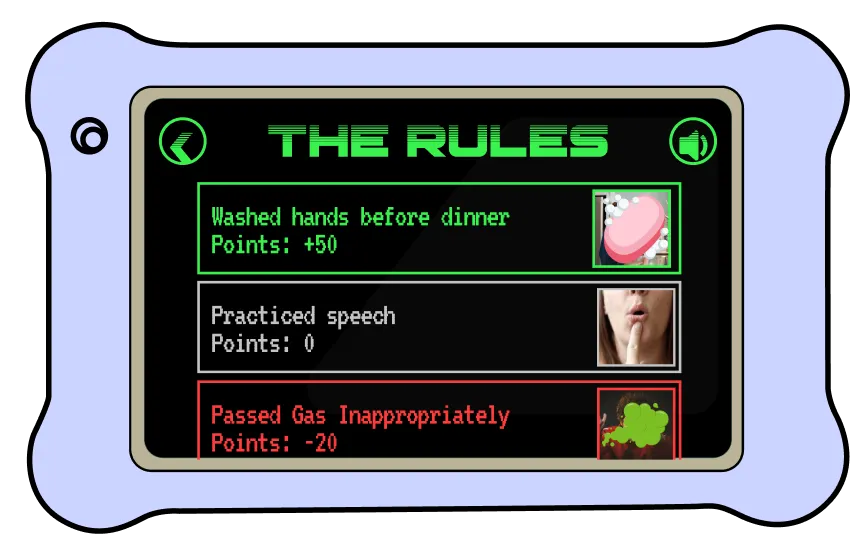Ever tried to get your child to take turns during a game, only to find yourself caught in a tug-of-war over who gets to go next? I’ve been there too, and I know it can be a challenge. But teaching your kid how to take turns is more than just about fair play—it’s about helping them develop patience, empathy, and social skills. In this guide, I’ll walk you through a simple, step-by-step process to teach your kid the art of taking turns, making playtime smoother and more enjoyable for everyone involved.
Table of Contents
1. Start with Simple Games
One of the best ways to introduce turn-taking is through simple games that naturally require alternating actions. I’ve found that even the most reluctant children can’t resist the allure of a fun, engaging game.
Here are some games that work wonders for teaching turn-taking:
- Roll-a-Ball: Sit across from your child and roll a ball back and forth. Each time you roll, say “My turn,” and when it’s their turn, prompt them to say “My turn” before rolling it back.
- Simon Says: Take turns being Simon. This game not only teaches turn-taking but also helps with listening skills and following instructions.
- Memory Match: Flip over cards to find matching pairs. Alternate turns, even if someone finds a match (which usually grants an extra turn in the standard rules).
Remember, the key is to keep it simple at first. As your child gets more comfortable with the concept, you can gradually introduce more complex games that require longer turns or more patience.

Read more: How to make Friends at School | A Step-by-Step Guide
2. Use Visual Aids and Timers
For many kids, especially those with special needs, abstract concepts like “waiting for your turn” can be challenging. That’s where visual aids come in handy. They provide a concrete representation of an otherwise intangible idea.
Here are some effective visual aids I’ve used:
| Visual Aid | How to Use | Benefits |
|---|---|---|
| Turn-Taking Cards | Create cards with each player’s name or picture. Display the current player’s card prominently. | Clearly shows whose turn it is and who’s next |
| Sand Timer | Use to limit turn duration. When sand runs out, it’s the next person’s turn. | Provides a visual representation of time passing |
| Turn-Taking Chart | Create a chart showing the order of turns. Move a marker to indicate the current player. | Helps kids understand the sequence of turns |
Timers are particularly useful for kids who struggle with ending their turn. I often use a visual timer app on my phone, which shows time depleting in a colorful, easy-to-understand way. It’s amazing how much smoother transitions become when kids can see the time ticking away.
3. Model and Narrate Turn-Taking
Kids learn best by example, and turn-taking is no exception. I always make a point to model turn-taking behavior in my interactions with children and their parents. It’s not just about showing them how it’s done; it’s about making the invisible visible.
Here’s how you can effectively model and narrate turn-taking:
- Use clear language: Say things like “It’s my turn now” and “Now it’s your turn” during activities.
- Demonstrate patience: When it’s not your turn, model waiting calmly. You might say, “I’m waiting for my turn. I can be patient.”
- Narrate others’ turns: Point out when others are taking turns. “Look, Sarah is taking her turn on the slide. We’ll wait until she’s done.”
- Practice turn-taking in everyday situations: Take turns choosing TV shows, deciding on dinner, or picking bedtime stories.
Remember, consistency is key. The more you model and narrate turn-taking in various situations, the more natural it will become for your child. I’ve seen remarkable progress in kids whose parents commit to this approach.
4. Praise Effort and Improvement
Positive reinforcement is a powerful tool in teaching any new skill, and turn-taking is no exception. In my experience, acknowledging a child’s efforts can significantly boost their motivation to continue practicing.
Here are some effective ways to praise turn-taking:
- Be specific: Instead of a generic “good job,” try “I like how you waited patiently for your turn on the swing.”
- Praise the process: Focus on their effort, not just the outcome. “You’re working hard on taking turns. That’s great!”
- Acknowledge improvement: “I noticed you’re getting better at waiting for your turn. You didn’t get upset this time!”
- Use non-verbal praise: A thumbs up or a high-five can be just as effective as verbal praise.
It’s important to catch them being good. Even if they’re not perfect at turn-taking yet, praising small improvements can encourage them to keep trying. I’ve seen children beam with pride when their efforts are recognized, which motivates them to continue practicing this important skill.
5. Practice in Real-Life Situations
While structured games are great for introducing turn-taking, the real test comes in everyday situations. I always encourage parents to look for opportunities to practice turn-taking in real life. These spontaneous moments can be incredibly valuable learning experiences.
Here are some everyday scenarios where you can practice turn-taking:
- At the playground: Waiting for a turn on the slide or swing.
- During meals: Taking turns sharing about your day.
- In conversations: Practicing listening while others speak, then taking a turn to respond.
- With siblings: Alternating who gets to choose the movie or game.
- While shopping: Taking turns pushing the cart or choosing items.
Remember, real-life situations can be more challenging because they’re less structured. Be patient and provide support as needed. I’ve found that kids who practice in various real-life scenarios tend to generalize the skill more quickly, applying it to new situations with greater ease.
6. Teach Coping Strategies for Waiting
Waiting for a turn can be tough, especially for young children or those with special needs. That’s why I always emphasize the importance of teaching coping strategies. These techniques can help kids manage their emotions and impulses while waiting.
Here are some effective coping strategies I’ve used:
- Deep breathing: Teach your child to take slow, deep breaths when feeling impatient.
- Counting: Encourage them to count to a certain number while waiting.
- Distraction: Provide a small toy or activity they can engage with while waiting.
- Positive self-talk: Teach phrases like “I can wait my turn” or “It will be my turn soon.”
- Physical movement: If appropriate, let them do jumping jacks or stretch while waiting.
I’ve seen these strategies work wonders, even with children who initially struggled with impulsivity. One child I worked with used to get very upset while waiting for his turn on the computer. We practiced deep breathing together, and within a few weeks, he was able to wait calmly, using his “special breathing” technique.

Read more: Turn Taking Activities for Kids
7. Gradually Increase Wait Time
Learning to take turns is a process, and it’s important to set realistic expectations. I always advise parents to start with short waits and gradually increase the duration as their child becomes more comfortable.
Here’s a sample progression you might follow:
- Start with very brief turns, maybe just 10-15 seconds each.
- As your child manages these short turns well, increase to 30 seconds.
- Progress to 1-minute turns, then 2 minutes, and so on.
- Eventually, work up to longer, more natural turn durations.
Remember, every child is different. Some may progress quickly, while others might need more time at each stage. The key is to move at a pace that challenges your child without overwhelming them. I’ve seen children who initially couldn’t wait for more than a few seconds learn to take turns in complex board games with patience and grace. It’s all about consistent practice and gradual progression.
Goally | Apps That Build Behavior & Life Skills for Kids
Want to keep your child motivated while building essential behavior and life skills? Goally’s skill-building tablet is designed to celebrate small wins and help your child grow. Our Behavior Tracker helps you reward your kid for specific skills, like “being kind” or “flushing the toilet.”

By setting clear expectations and rewarding their efforts, you foster a positive environment for your child to flourish in their behavioral skills journey.
Teaching your kid to take turns is more of a marathon than a sprint. It takes patience, sticking with it, and plenty of practice. But trust me, it’s so worth it. As you try out these tips, you’ll probably notice not just better turn-taking, but also a boost in your child’s social skills and ability to handle their emotions. Remember, every little win counts. Celebrate the small victories and keep cheering your kid on. Eventually, taking turns will be totally natural for them, helping them succeed with friends, in school, and beyond.
Resources:
FAQs about Teaching Your Kid How to Take Turns
Why is it important for my child to learn to take turns?
Taking turns helps children develop patience, empathy, and social skills, which are essential for building positive relationships. It's a fundamental skill that supports cooperation and fair play in group settings.
At what age should I start teaching my child to take turns?
You can start introducing the concept of taking turns as early as 2-3 years old. Simple games like "Pass the Ball" or sharing toys can help reinforce this skill from a young age.
How can I encourage my child to wait their turn without getting frustrated?
Using visual aids like timers or charts can help your child understand when their turn is coming. Positive reinforcement, such as praise or rewards, also motivates them to be patient.
What should I do if my child refuses to take turns?
Stay calm and consistent, gently reminding them of the importance of taking turns. If they struggle, consider practicing with simpler games or activities until they feel more comfortable.
Can taking turns be taught to neurodivergent children?
Yes, neurodivergent children can learn to take turns with appropriate support and patience. Visual supports and clear, consistent cues can be especially helpful for children with learning differences.
This post was originally published on 11/27/2023. It was updated on 08/16/2024.

Hennah is an experienced writer and researcher, helping children with autism, ADHD, and other neurodivergent conditions. As a blog contributor for Goally, she combines her deep understanding of neurodiversity with practical advice, offering valuable insights to parents and educators.





